Rab Ionosphere 5 review: plush yet packable camp comfort
The new Rab Ionosphere 5 is a genuine rival to the current leading sleeping mats on the market

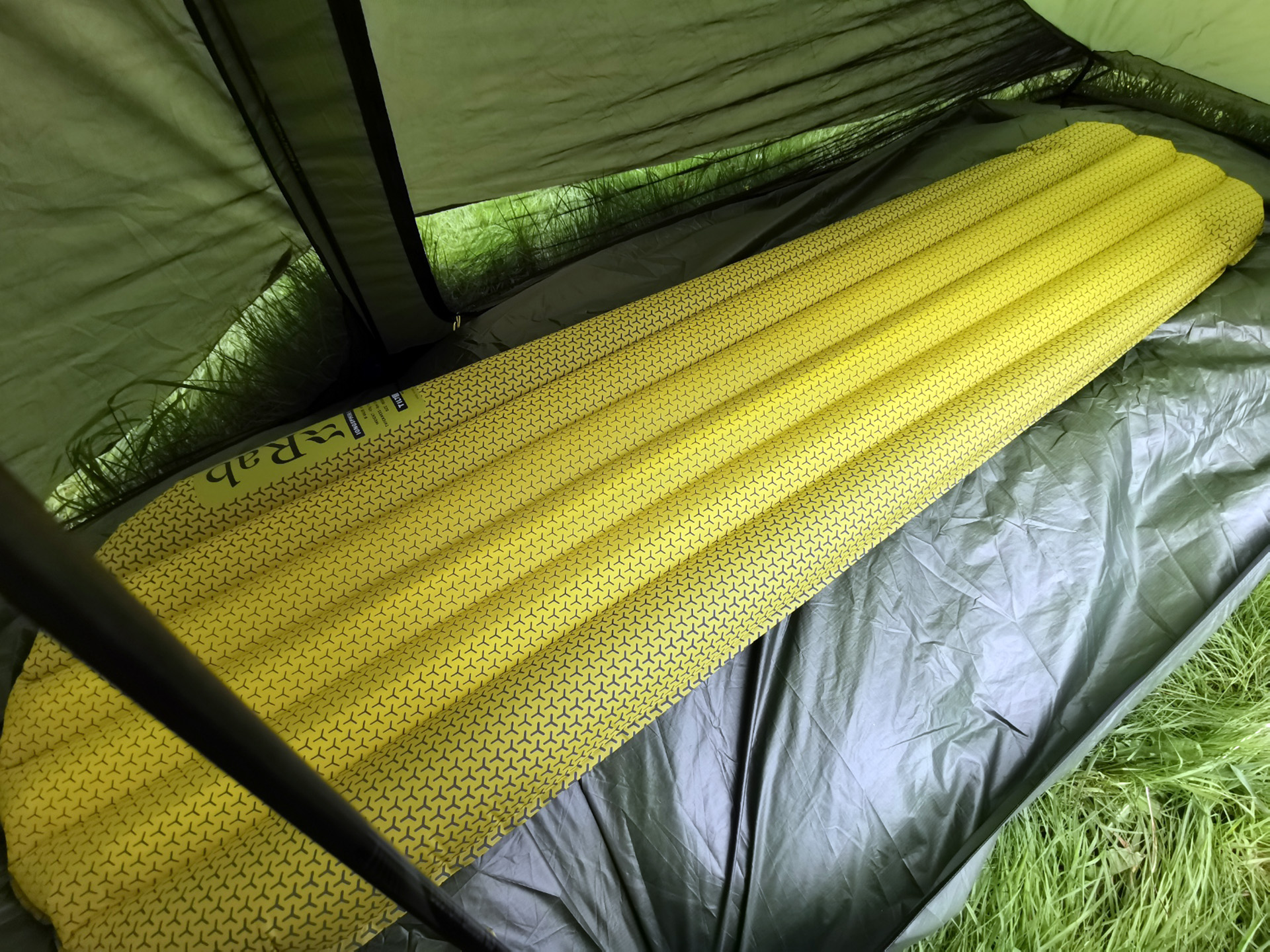
The Rab Ionosphere 5 is a versatile sleeping mat for weight-conscious backpackers and mountaineers looking for three-to-four-season warmth in a lightweight, compact package. It feels plush and warm and boasts an impressive 80 mm inflated loft and plenty of insulation. Only the tapered mummy cut slightly limits overall comfort. You can get around this by opting for the long wide version, but the trade-off is that it is significantly heavier and bulkier.
-
+
Standard version offers excellent warmth to weight
-
+
Plush and comfortable
-
+
Inflates quickly and easily
-
-
Long wide version isn’t as impressive as standard in terms of warmth to weight
-
-
Tapered mummy shape may not suit restless sleepers
Why you can trust T3

In this Rab Ionosphere 5 review, we’ll look at one of the flagship releases for 2023 from the renowned British outdoor brand, reviewing this technical sleeping mat’s build quality, comfort, warmth, weight, pack size and overall ease of use.
The Ionosphere 5 is one of a new family of insulated sleeping mats from Rab. Their launch is a big deal for the brand – these are the first sleeping mats Rab has ever produced in its 42-year history; therefore, these are the best camping mats from the brand to date.
The new range consists of four other models in addition to the Ionosphere 5 (Exosphere 3.5, Stratosphere 4 and 5.5 and the Ionosphere 5.5), plus a camping pillow. Those numbers broadly reflect each mat’s warmth or R-value – the higher the number, the warmer the mat.
This particular mat sits in the mid-to-upper range in terms of overall warmth. Despite being called the Ionosphere 5, it has an ASTM-rated R-value of 4.8. Still, for UK use, that’s suitable for spring-thru-autumn camping, even extending into milder winter nights, providing temperatures don’t dip too far below freezing.
But the Ionosphere 5’s real USP is its low weight. This is the lightest mat in the Rab range, tipping the scales at 550g in the regular size. As such, it’s aimed at weight-conscious backpackers and mountaineers looking for comfort, warmth and versatility in a single lightweight package.
Rab Ionosphere 5 review: price and release date
Released in SS23, the Ionosphere 5 is priced at £150 for the standard model and £180 for the long-wide model, or $180 and $210, respectively. It can be purchased via Rab UK and Rab US—AU price and availability TBC.
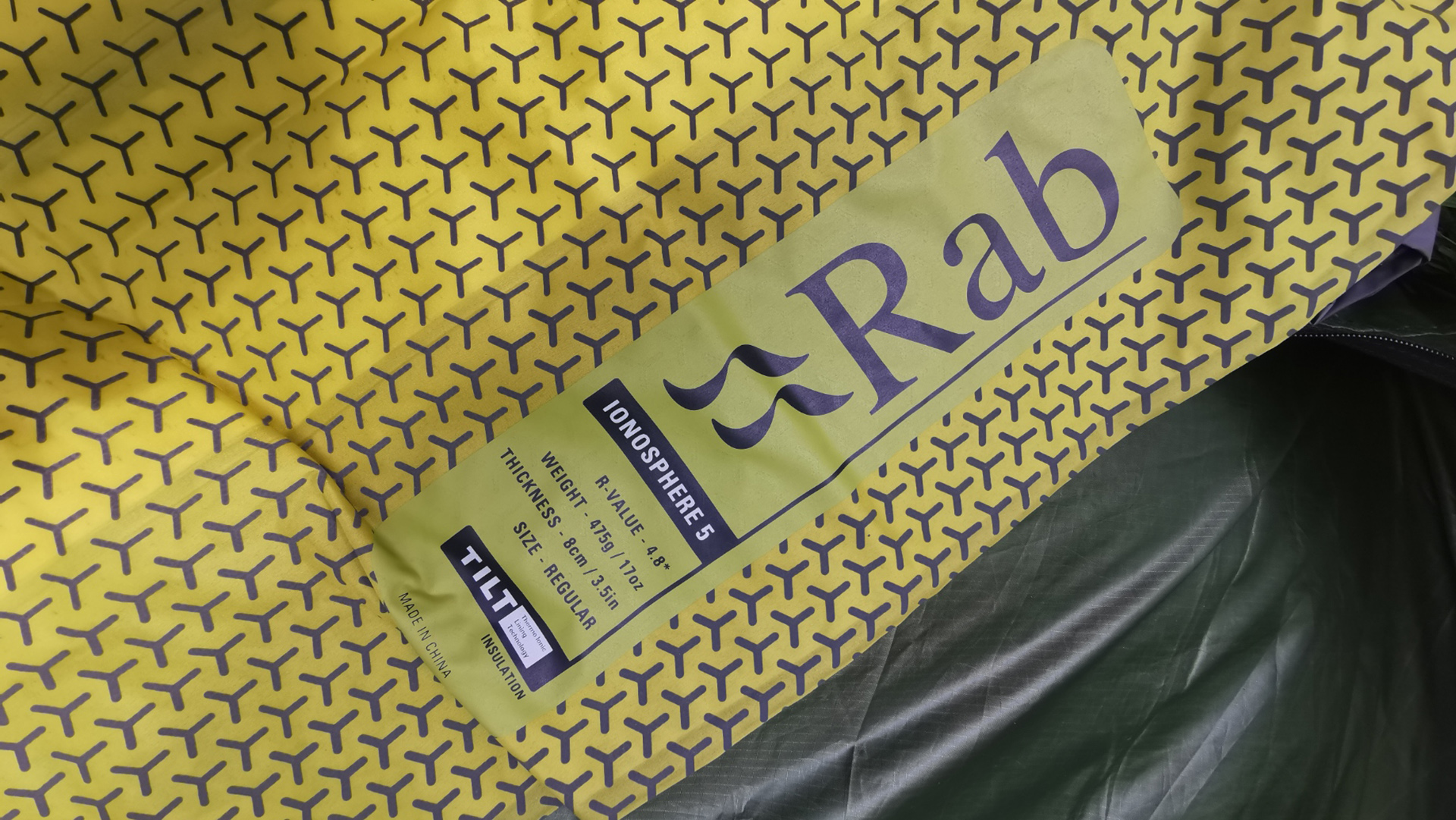
Rab Ionosphere 5 review: specifications
- Dimensions: Regular 183 x 51cm (72 x 20in), Long Wide 196 x 64cm (77 x 25in)
- Main fabric: 20D Recycled polyester outer fabric with internal TPU coating and PFC-free DWR
- Insulation: Stratus R 100% recycled polyester insulation (160gsm with TILT)
- Weight: Reg 550g, Long Wide 810g
- R-Value: 4.8
- Packed size: Regular 23cm x 11cm (9 x 4.3in), Long Wide 28cm x 12cm (11 x 4.7in)
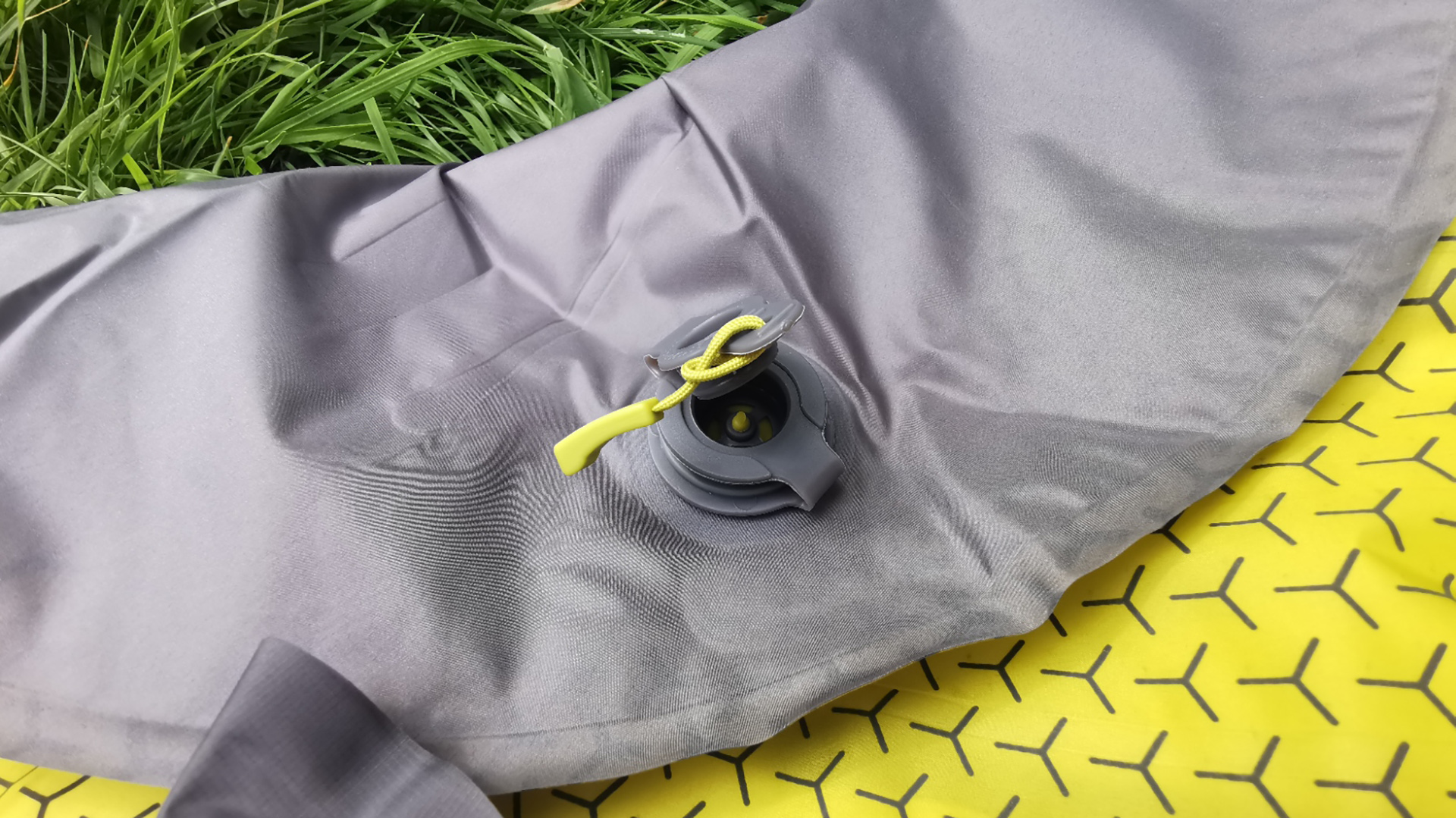
Rab Ionosphere 5 review: design and features
As a brand, Rab is best known for its insulated down and synthetic jackets and sleeping bags. In fact, the brand’s tagline is ‘masters of insulation’ – so it’s no surprise to find the same tech from Rab’s insulated gear carried over into this mat. This includes 100% recycled Stratus R synthetic insulation, augmented by a heat-reflective TILT lining. This is essentially a shiny metallic film designed to reflect radiated body heat and therefore boost overall warmth.
Get all the latest news, reviews, deals and buying guides on gorgeous tech, home and active products from the T3 experts
The outer fabric is also made from recycled content in the form of a 20-denier polyester that is finished with a similarly eco-friendly PFC-free water-repellent treatment. It’s as tough as most other lightweight insulated air mats on the market and scores well on the sustainability front too.
In terms of design, the Ionosphere 5 is a tapered mummy style, which improves overall warmth for weight compared to a rectangular mat. The regular size is pretty much standard – 183cm long and 51cm wide, while the long wide version adds an extra 13cm (5 inches) in both dimensions. The latter obviously gives significantly more wriggle room, which restless sleepers might appreciate. Unfortunately, there’s a major trade-off: the weight jumps from a svelte 550g to a heftier 810g. Those extra grams effectively turn this from a lightweight mat into a bit of a beast, so we’d personally avoid the long wide model.
The Ionosphere 5’s construction consists of longitudinal, air-filled baffles. The two baffles at either edge are slightly oversized, which helps keep the sleeper centred in the middle of the mat to prevent you from rolling off it in the night (never a pleasant occurrence at 3 am in a dark, cold tent). It inflates to an impressively plush 8cm, over three inches in thickness, which is more than enough to soak up any lumps and bumps.
The mat’s supplied stuff sack also merits a mention. It folds up burrito-style, with elastic straps to keep the mat in place, which makes packing up camp both quicker and easier. It even incorporates a small repair kit, so you’ll always have it handy in case of a puncture.
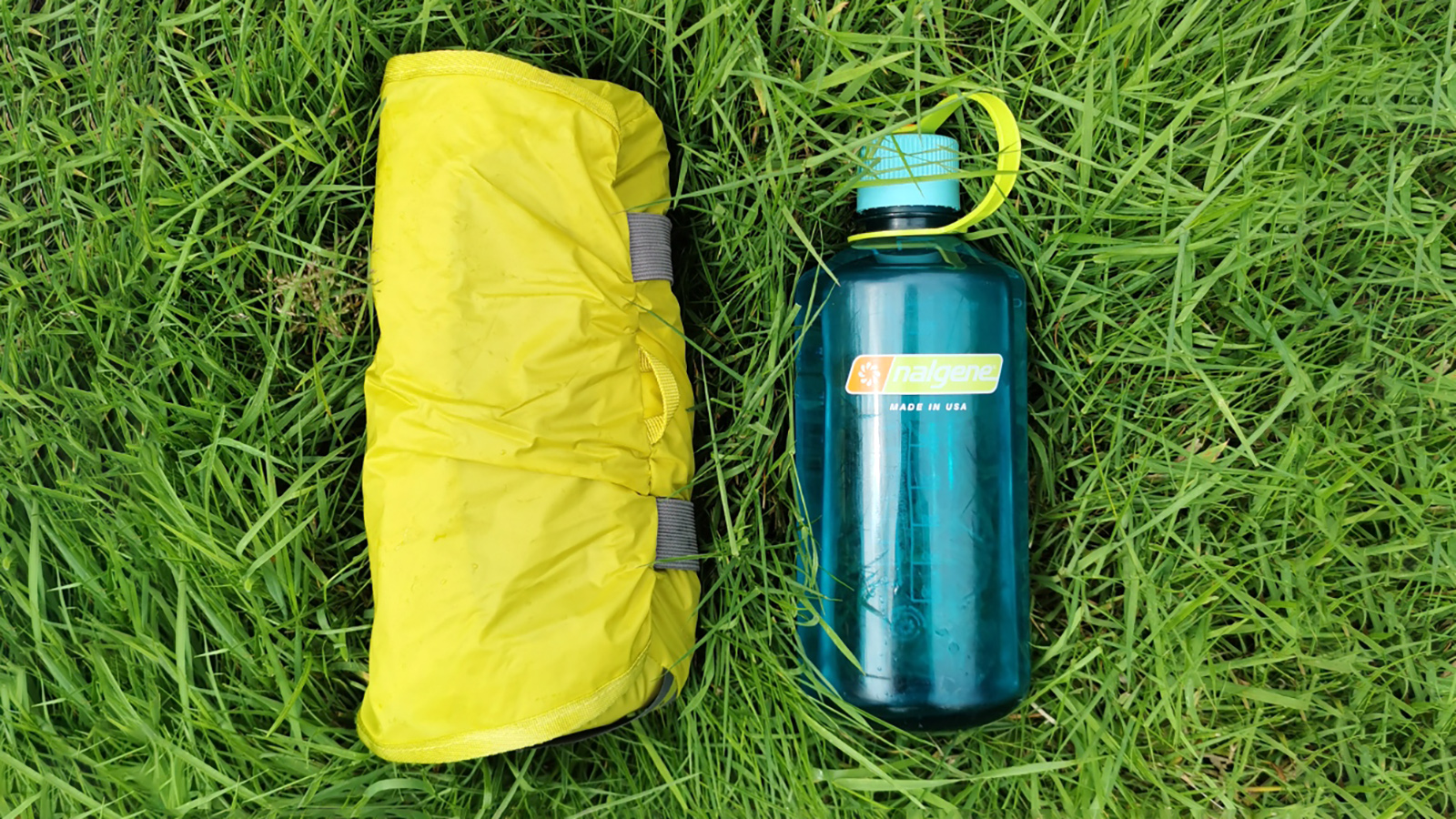
Rab Ionosphere 5 review: performance and comfort
This mat strikes a great balance for backpacking, being light and packable whilst offering a little more luxury than most. The fact that it is 8cm thick means it works particularly well for side sleepers, providing excellent cushioning for shoulders and hip bones. Unlike a lot of insulated air mats, it’s also nice and quiet – there’s no crisp packet crinkle nor any squeaks if you shift around or rollover. That makes for a more pleasant night’s sleep and is also something that will be appreciated by any tentmates you happen to be sharing with.
The design and construction are broadly similar to numerous other mats on the market, but it feels well-made, with some thoughtful extras like a well-designed pump sack, practical stuff sack and included field repair kit. The pump sack is a lot like Exped’s well-regarded ‘Schnozzel bag’ system. It fits securely to a low-profile inflation/deflation valve located on the underside of the mat, which is intuitive and easy to use.
On the test, it proved very effective. It holds a lot of air and only weighs 71 grams. We found it easier than most to fill inside a confined tent, and it only took three sacksful of air to inflate the mat fully. That’s a lot easier than using lung power alone and also has the benefit of preventing moisture from getting inside the mat, which over time, can cause mould and mildew growth, shortening its lifespan.
Admittedly, although the standard mat’s weight of 550g is commendably light, there are even lighter mats on the market, even in this price bracket – though few are as warm or well-insulated, and fewer still feel as reassuringly robust. But it is worth noting that the tapered shape is unlikely to suit everyone. Some won’t find it an issue, but others might appreciate a little more room to stretch out. The long wide version solves this drawback with its added length and girth, but it’s too heavy for us to wholeheartedly recommend if you’re looking for a genuinely lightweight mat.
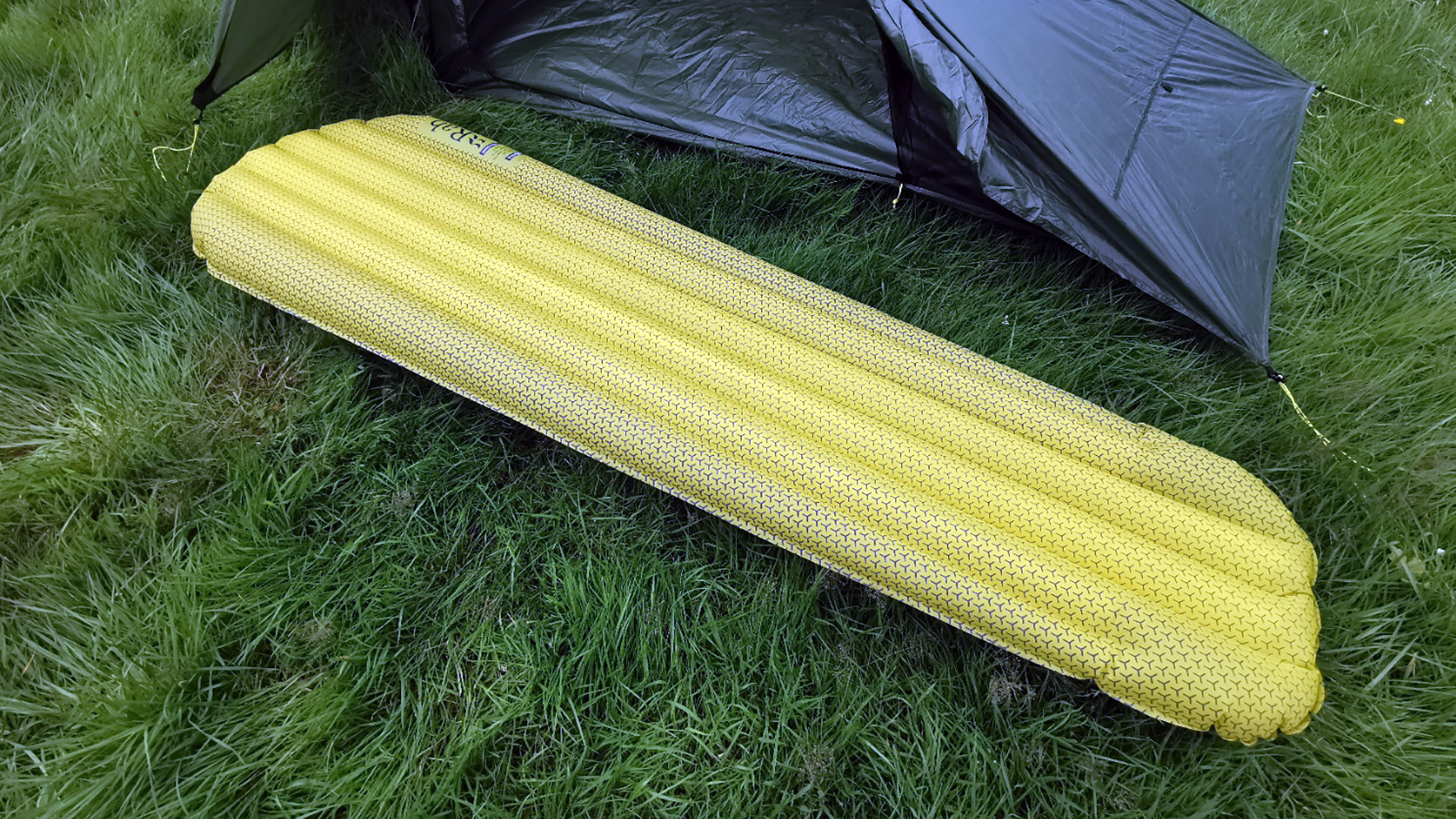
Rab Ionosphere 5 review: verdict
There’s lots to like about this impressive new entrant to the insulated air mat market. Firstly, it’s very comfortable, even if you’re a side sleeper. It’s also lightweight and packable, which makes this a good choice for weight-conscious backpackers and mountaineers – though dedicated ultralighters could look at even lighter rivals. It’s also warm enough for full three-season use and even winter camps, provided overnight temperatures don’t fall too far below freezing.
It also gets good marks for sustainability since it is made from recycled materials and uses a water-repellent treatment free from environmentally harmful PFCs. We’d recommend going for the standard version over the long and wide version, though, since in our view, the latter’s heftier weight and packed size (as well as the increased cost) aren’t worth the slight increase in comfort.
Rab Ionosphere 5 review: alternatives to consider
Ultimately, if you’re looking to go even lighter without sacrificing warmth, it’s worth considering the latest generation of the Therm-a-Rest NeoAir XLite NXT (370g), which we reckon just has the edge over this mat. Downsides? It is considerably more expensive than the Ionosphere 5. Rab’s pump sack inflation system is also superior to Therm-a-Rest’s version, and we prefer the Rab valve system too.
Other popular high-quality alternatives include the Exped SynMat and DownMat ranges, or Sea to Summit’s Ether Light XT mats. It’s really a sliding scale of preferences here, so which specific mat is best for you will depend on whether your priorities are low weight and pack size, affordability or outright comfort. Unfortunately, you can’t have it all – though the Ionosphere 5 does a pretty good job of balancing all these elements.

An outdoors writer and editor, Matt Jones has been testing kit in the field for nearly a decade. Having worked for both the Ramblers and the Scouts, he knows one or two things about walking and camping, and loves all things adventure, particularly long-distance backpacking, wild camping and climbing mountains – especially in Wales. He’s based in Snowdonia and last year thru-hiked the Cambrian Way, which runs for 298 miles from Cardiff to Conwy, with a total ascent of 73,700ft (that’s nearly 2½ times the height of Everest). Follow Matt on Insta and Twitter at @mattymountains